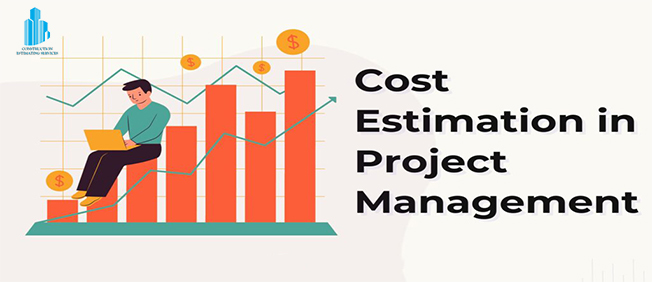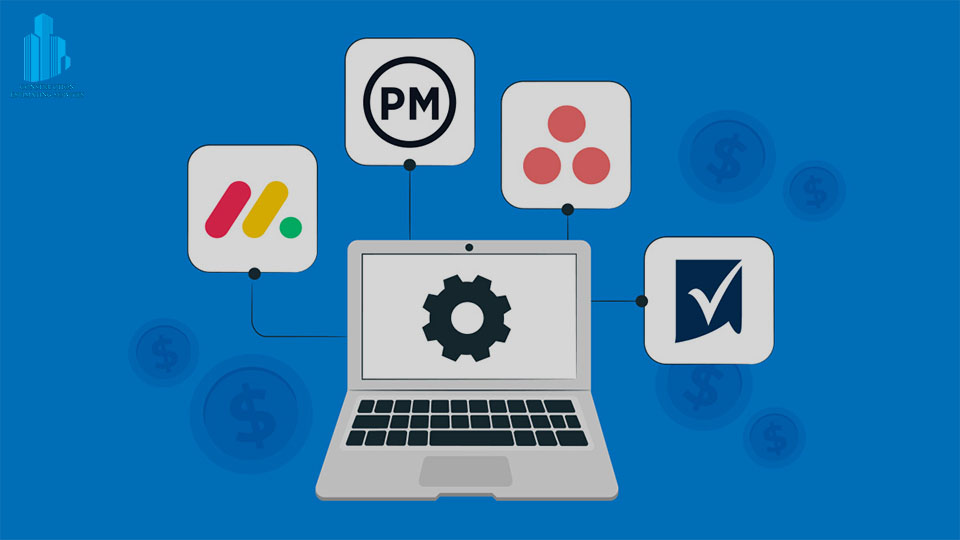What is Elemental Cost Analysis?
Elemental Cost Analysis (ECA) organizes construction costs into components or “elements” to give a detailed and clear view of a project’s financial needs. Each “element” is a construction-specific component, such as foundations, walls, roofing, or finishes. This method allows for an accurate allocation of resources and identifying cost drivers early in the process.

Importance in the Construction Industry: ECA significantly improves quality and design requirements while following project budgets. It provided the ability to estimation and costing accurately, as well as better decision-making and interaction with stakeholders, among others.
Historical Evolution of Cost Analysis in Construction
Early Practices and Methods
Historically, construction cost estimation was done mostly by manual calculations, intuition, and experience with past data because no modern tools were available. Builders often estimated the costs based on previous experiences and general metrics, which resulted in inefficiencies and inaccuracies.
Transition to Modern-Day Elemental Analysis
With the soaring demand for longer and more sophisticated construction projects, industry standards needed to become more thorough and detailed and thus, RICS New Rules of Measurement (NRM) came into being. It is now possible to achieve high accuracy and efficiency using the developing data analytics and modern building materials store software for elemental cost analysis.
The Fundamentals of Elemental Cost Analysis
Core Principles of Elemental Costing
The MECE (Mutually Exclusive, Collectively Exhaustive) Principle: MECE guarantees that all elements in a cost analysis are unique (no overlaps) and collectively cover the entire scope of the project. This quantitative treatment reduces redundancy and the danger of omitting aspects when choosing the right one.
Benefits of Categorizing Costs: Categorization simplifies projects, sets benchmarks, and clarifies them to stakeholders. It also improves the tracking of cost variations during diverse construction phases.

Key Components of an Elemental Cost Breakdown
Structure and Classifications: ECA usually is involved in cost breakdown into the major expense centers which are:
- Substructure (e.g., foundations, basements)
- Superstructure (e.g., walls, roofs)
- Finishes (e.g., flooring, painting)
- Services (e.g., electrical, plumbing)
Relation to Project Lifecycle Stages: Along with, different stages or phases of a project have their corresponding parts of each of the components of the project: from the design and procurement of the project to its construction and commissioning. With this understanding, managers can plan workers, equipment, and money accordingly.
Methodology of Elemental Cost Analysis
Steps in Conducting Elemental Cost Analysis
- Initial Project Scoping:
- Establish the project objectives, scope, and deliverables.
- Realize the major participants, and implement their preferences.
Gathering Data and Documentation:
- Get copies of architectural plans, product specifications, and historical cost charts.
- Make sure that all the obtained data are accurate and complete.
Classification and Breakdown:
- Set up the project to elements using frameworks standardized by experts.
- Allot the project’s costs to the appropriate elements.
Tools and Software for Accurate Cost Analysis
BIM (Building Information Modeling) and quantity surveying software constitute the basis of present-day ECA. Illustratively, tools such as Proest and Bluebeam Revu ease the estimation construction routines. Therefore, the manual inputs are no longer perfect.

Digital Tools and Technologies: Nowadays, ECA is highly dependent on digital tools like BIM (Building Information Modeling) and Quantity Surveying software, which is the first choice for a modern project cost analysis. These tools bypass manual calculations and are faster and more accurate. They also enable the visualization of costs as a 3D model.
Integrating Estimation Software in Analysis: Currently, platforms such as Bluebeam Revu simplify the process of connecting the expenses of the specific items with project models so a certain cost can be dated as soon as possible.
Application in Construction Projects
Elemental Cost Analysis for Residential Projects
Unique Considerations and Elements: As a type of construction that often projects are created according to the client’s interests, it is one of the main points that should not be forgotten. The main elements that are included are as follows:
- Site preparation
- Foundation and framing
- Interior finishes
Common Cost Drivers:
- The choices of material
- Labor expenses
- The laws of the local authorities and the permissions they give
For example, knowing the cost to sheetrock a basement helps homeowners plan effectively for their renovation.
Commercial and Industrial Construction Applications
Tailored Approaches for Larger-Scale Projects: Unlike a residential project, an office that includes digital transformation and introduces technologies such as IoT requires a comprehensive analysis. Thus, structural work, for example, is more specific and deals with the construction’s load-bearing capacities, energy consumption, and power use.

Balancing Cost and Functionality: Getting the Optimal Point. The main idea behind these projects is to obtain cost and performance curves so that they can be the most efficient.
Role in Civil and Infrastructure Projects
Key Factors Influencing Cost Allocation: There are all sorts of particular assumptions in infrastructure fallouts, like roads and bridges, such as:
- Soil characteristics
- The waste of energy that happens in air, water, or objects.
- Ways to keep the material valid with time.

Specialized Cost Elements: Oftentimes, such projects as earthworks, drainage systems, and specialized equipment are the essence of these projects.
Benefits of Elemental Cost Analysis
Enhanced Cost Predictability
Reducing Uncertainties in Budgeting: The ECA layered approach quickly uncovers possible cost drivers, avoiding financial surprises due to unplanned expenditures.
Improved Financial Planning: Predictable estimating enables investors, owners, or other stakeholders to know where to allocate resources and avoid budget overruns.
Facilitating Better Decision-Making
Prioritizing Resources Effectively: This primarily granted a definite and clear path to the most important objectives, one single investment point, and the sustainability issue.
Impact on Project Timelines and Scope: Being able to see where your priorities should be and whether you want to move the date forward or add more components is what project managers can now do with a clear understanding of cost.
Challenges and Limitations in Elemental Cost Analysis
Elemental cost analysis has become an important technique in building and project management. It offers a structured, systematic way of cost estimation. Despite these pros, a few challenges and limitations associated with the method can make the estimation process more effective and reliable once addressed. This section focuses on the common faults and critical issues of elemental cost analysis.

1. Common Pitfalls in Elemental Cost Analysis
Overlooking Critical Elements
One of the main difficulties of elemental cost analysis is the non-inclusion of necessary components. This is the biggest problem with estimating the costs of individual items left out of the original contract. Using subcontractors who use long lead times and materials with special design specifications means the contractor must incur extra expenses. However, this is more than simply a monetary concern; it is also an issue of timing, as they are likely to miss out on the potential for earning and will upset their partners.
Misclassification of Costs
The common pitfall of classifying costs is attribution to incorrect categories. This mistake throws managers off guard, and they make wrong decisions. A typical example is the miscalculation of the purchase of a piece of equipment: the operating cost is falsely calculated instead of the capital cost. Such glitches cause ambiguity and inconvenience in decision-making, eventually leading to unsuccessful projects.
2. Dealing with Market Fluctuations and Unforeseen Events
Accounting for Inflation and Volatility
One of the biggest challenges in supporting the elemental cost analysis is the change in market trends. Construction expenses are affected by rate hikes, deflation, and fluctuations in market demand and supply due to economic status, geopolitical occurrences, and the installation of new trade systems. For example, the price of the steel required for the project can suddenly skyrocket due to a shortage. The discrepancy in these predictions consequently denotes the possibility of incorrect estimations, which will make budgetary planning difficult and have operational implications.
Unforeseen Events
Unpredicted events, such as natural disasters, labor disruptions, and product chain difficulties, may ruin highly planned projects. Those events rarely happen without raising prices, which is generally why project managers should install backup procedures into their elemental cost analyses.
3. Strategies for Contingency Planning
One effective means of resolving market volatility and unexpected events is to incorporate contingency planning. Here are some strategies that can be helpful in this respect:
Setting Up a Contingency Fund
Allocating a cont fund is an active response to handle the potential guarantees. This reserve act guarantees that the project can withstand the financial troubles and maintain its quality and time %. The thumb rule is to allocate 15% of the finances in correlation to the project’s complexity and potential risk.
Regularly Updating Cost Estimates
Project requirements and the marketing situation are course-shifting with time. Regularly updating the cost estimates of the whole project will ensure that the analysis remains up-to-date and accurate. Thus, project managers can resize the budget by integrating dynamic data and real-time observations, bypassing the overruns.
Case Studies and Practical Examples
Case Study: Successful Implementation of Elemental Cost Analysis

Real-World Example with Results and Insights: In a commercial office building project, ECA helped the team detect savings opportunities and a 10% reduction in expenses without any decrease in quality.
Lessons from Projects with Inaccurate Cost Analysis
Analyzing Failures and Lessons Learned: A residential development suffered a 20% budget overrun due to inaccurate elemental costing. The major learning point from this disaster was the necessity for data authenticity and stakeholder input.
Future Trends in Elemental Cost Analysis
The Impact of Technology on Cost Analysis
AI and Machine Learning in Construction Estimation: Artificial intelligence (AI) has resulted in a massive transformation in the ECA process. This has led to automating data analysis and machines by offering predictive analysis.
Role of Big Data and Predictive Analytics: Big data helps identify costs by providing the basis for data-provided decisions. This further increases the accuracy of forecasting costs.
Sucost forecasting rental Costing
Incorporating Green Building Materials: Sustainability has also become part of ECA by including such materials as straw bale and rammed earth wall construction.
Balancing Costs with Environmental Considerations: While the initial cost of sustainable options could be higher today, this scenario is recouped in terms of long-term savings and environmental benefits.
Key Takeaways from Elemental Cost Analysis
- ECA is an organized way to manage construction costs and is also quite precise.
- The benefits of ECA are not limited to the single aspect of budgeting, as it is a tool that allows for an accurate estimation and costing process, supports a solid decision-making process, and the collaboration of stakeholders.
- Both difficulties and the latest gadgets are pushing ECA forward as the construction business tool that must be used to understand and manage costs effectively.
Frequently Asked Questions (FAQs)
What makes elemental cost analysis different from other methods?
The ECA concept is structured and distinguishes itself from other widely used contracting methods. The former provides more details, such as separating costs into specific elements that are partitioned into different stages.
How can I ensure accuracy in my cost analysis?
The finest, most reliable, and standardized frameworks (modeling) are the approaches that lead to the highest accuracy in construction estimation and costing.
What are the top tools for elemental cost analysis in 2025?
BIM, AI, and ML are the major technological development forces in the construction sector. These tools are industry-changing innovations. Some of the tools already in use or that will come into play in 2025 are ProEst, CostX, Bluebeam Revu, etc.
How does elemental cost analysis adapt to small vs. large projects?
While the same principles apply, the classifications are generally much less detailed on small projects, and the cost breakdowns are extensive on the large ones.
Can elemental cost analysis improve long-term project outcomes?
Most certainly, elemental cost analysis is important. If the plan is well followed, it aids in elaborating the plans. It ensures success and that the project is well followed.











